Journeys with the Fuji X-E1 and Olympus OM-D by Arindam Pal
Hi Steve,
Ever since I started following you, my opinions about photography systems changed. Your articles have inspired me to move to a smaller form factor even after shooting full frame for years.
I will try to be brief with my story. I started shooting a few years back but never improved because of poor lens choices and lack of proper education. Then I purchased my first Full Frame, a Nikon D700. Coupled with a few good pro lenses, the initial IQ motivated me to gain more education in this fascinating hobby. So, even though I work as a Management Consultant, my second career would definitely be in photography where I work for myself and not The Man.
When I started reading your blog and discovered mirror-less cameras and the gorgeous Leica, I was skeptical about migrating to a whole new system. But the constant barrage of mind-blowing photos from fellow enthusiasts ignited a spark and I bought my first compact system – the Fuji X-E1 along with 35 f/1.4, 18 f/2 and a Voigtlander 21 f/4. I thoroughly enjoyed shooting with considerable less load to lug around and the superior IQ that rivaled even my D700 in low light. I used the system on a trip to Maui. As you can see, the monochrome renditions and the shallow DoF when wide open were better than what I had expected from this system. Even the color spectrum looked great. It was my companion for a few months.
But then, the utterly sluggish AF posed a lot of problems in the kinds of shots I was aiming for. After reading a few comparison reports, I decided to sell the system for an OM-D with the Pana-Leica 25 f/1.4 and the Oly 45 f/1.8. Overall, I am happy with the system as I can now get sharp focus without even trying! However, I do miss the Fuji look and in contrast to what many others have said, the low light high ISO of the OM-D still does not compare to what the X-trans sensor could do. But for everyday purposes, this system fits fine and even though I was nervous in moving to the M43 format, I think there is no doubt that from a sensor that small, the IQ and the fun factor shooting with the OM-D just topples every notion of modern-day photography. My dream compact would be an updated full frame X-trans like sensor, OVF/EVF with rangefinder options for MF, Leica quality glass and snappy AF with a hybrid contrast/phase detect. Let us see what the future brings!
Cheers,
Arindam
Image 1: X-E1 with 35 1.4, ISO 250 f/2.8; 4 wheel drive in Lanai
–
Image 2: X-E1 with 35 1.4, ISO 2000 f/1.4; I loved the super shallow DoF of my wife’s eyes
–
Image 3: X-E1 with 18 f/2, ISO 800 f/5.6; sunset shot but handheld – carried the least amount of gear as possible
–
Image 4: OM-D with 45 f/1.8, ISO 1600 f/1.8; the rickshaw puller during a recent trip to India was surprised to see why I was shooting him
–
Image 5: OM-D with 25 f/1.4, ISO 200 f/2.2; Streets of Old Delhi – the pup had decided to take an afternoon siesta on top of a parked car
–
Image 6: OM-D with 25 f/1.4, ISO 1600 f/1.4; A hand pump (or tube well) that provides fresh water to the neighborhood. I liked the small area of light on this otherwise dark street
–
Image 7: OM-D with 45 f/1.8, ISO 1600 f/1.8; Dimly lit room but the IQ was quite good unless you pixel peep

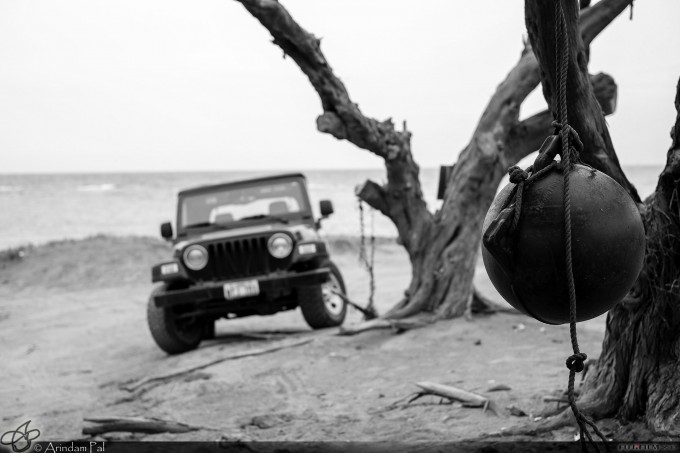
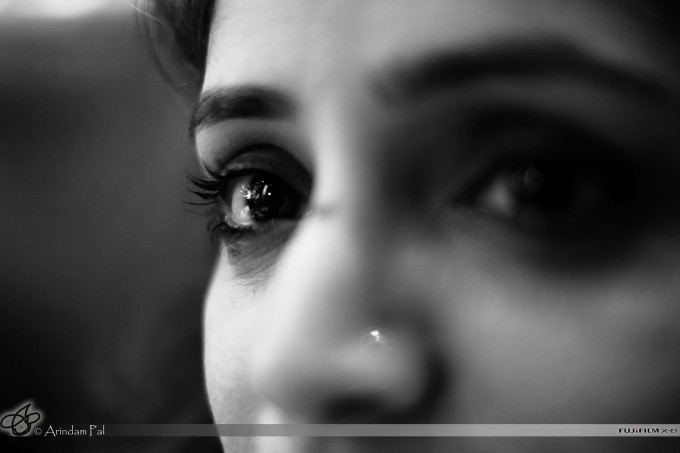
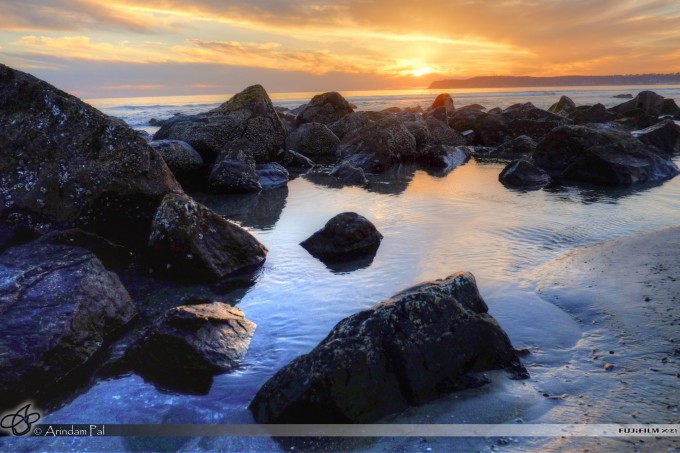
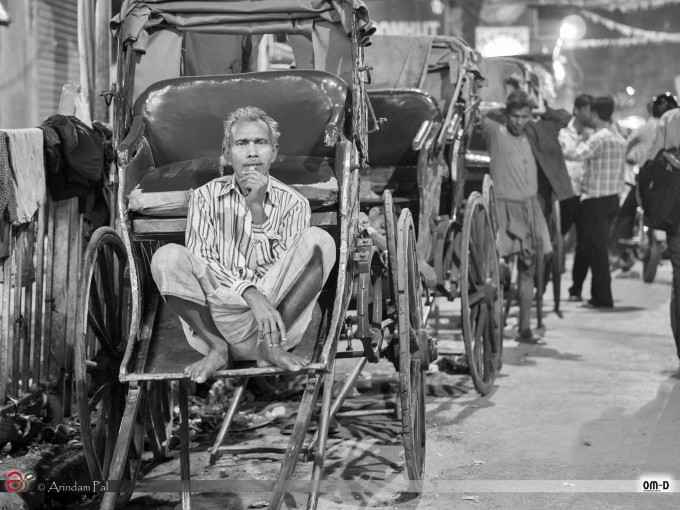
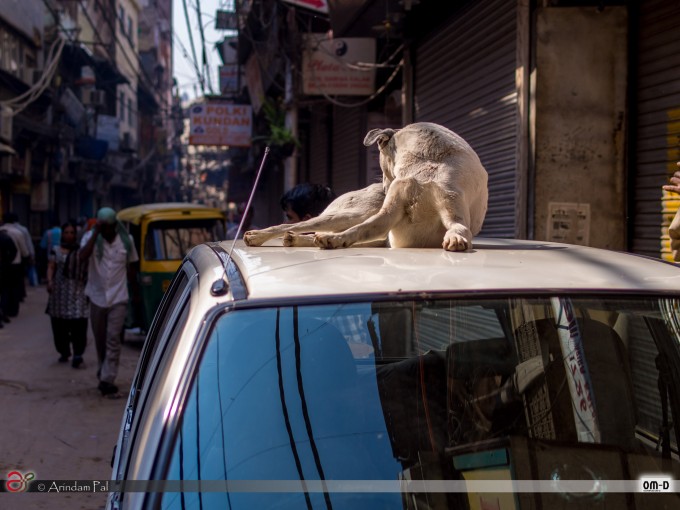
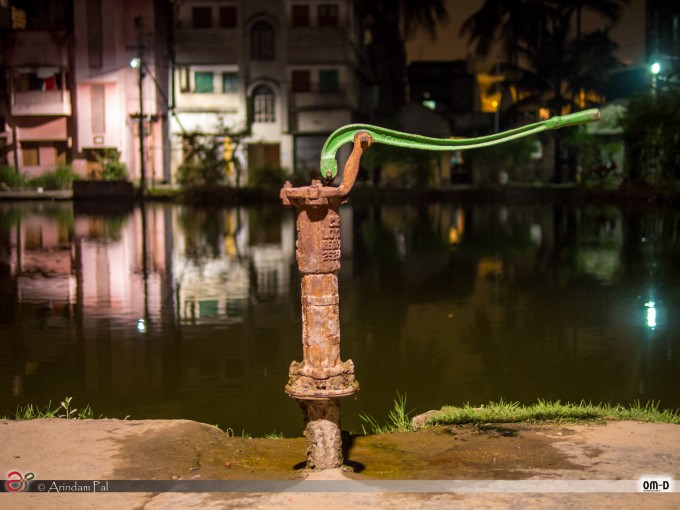
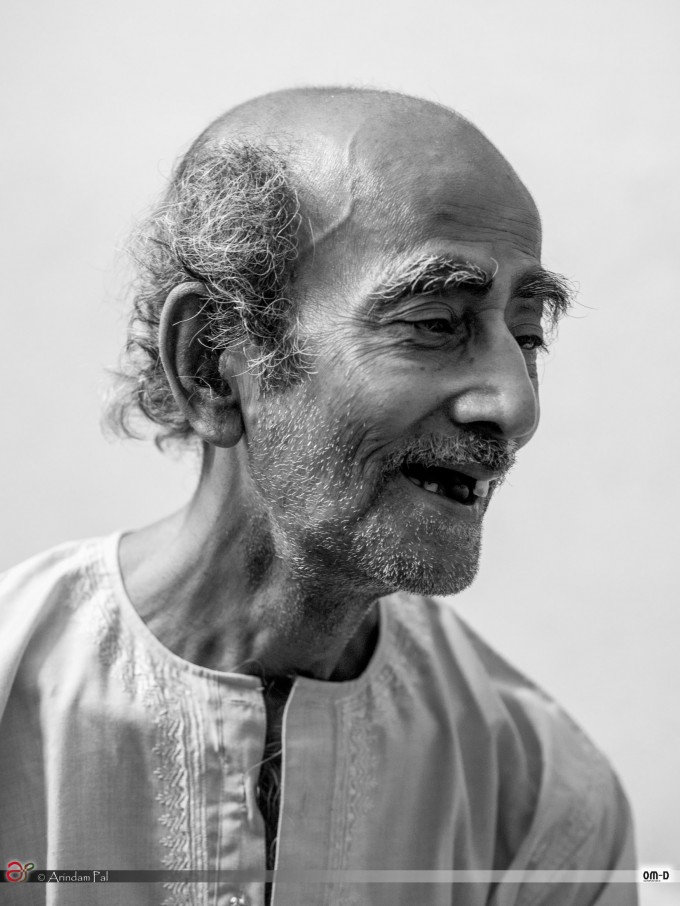


What a shame that D3xmeister chooses to post a negative comment on a site that favors professional photographers, each of whom no doubt understands both the concept and raison d’etre of watermarking.
I never even saw the photos, the only thing that pops and cuts my eyes is that thick line present in all the photos. They are ruined.
Since my photos have been stolen before, I would always choose to watermark on a public site. These also included client photos. It’s a strange comment nonetheless. Owning a D3X does not make someone a Pro
Nice comparison. I am very tempted by the X-E1, and your shots do nothing but tempt me further. I just love the way these new Fuji images look. The OM-D is also very impressive
I really like these shots! Especially the black&white one are lovely. I think the Fuji X system is very well suited for black&white. It is unfortunate that the focus speed is slow, yet I find the new(er) XF 18-55 faster than the original XF 35mm.
In the end it is all about compromises. I also re-adjusted from a DSLR system (with fast AF and everything) but I find the compromises of the Fuji X acceptable. The camera you have with you, and carry everyday, is the best one. Regardless of DR, hi-ISO, AF speed and so on.
Hell of a water mark…
Realy cool post. The dog chilling on a car 😀 only cats dare to do that on this side of the world 🙂
First of all, these are really nice photos, sir!
The OM-D/ Panasonic 25mm F1.4 & Olympus 45mm F1.8 does magic indeed!
The best thing about M43 is that you can always use the full aperture without much issues; DOF is no match when compared to a full frame machine but again there are gives and takes.
It seems like the jump to an even smaller form factor is possible right now. After switching from full-frame film to the OMD a while back, I’m now checking out the next logical step down in the X20.
These are big steps, with a 4-fold reduction in sensor area between each (16-fold from the FF to the 2/3″).
From a practical standpoint, I find myself readjusting by being more careful with exposures to avoid amplifying noise or causing posterization when enhancing DR (although because of the 14 bit RAF files, I am still finding a reasonable amount of flexibility), and changing the minimum aperture I select to avoid diffraction limiting performance. If I needed to print larger, I could be worried about limited resolution, but since I rarely need to go larger than 11×14 or so, 3000×4000 finely tuned pixels are enough.
The bigger paradigm shift seems to be image processing techniques to recreate certain effects that are done optically with a larger format camera. Stitching to get larger high-resolution images rather than using a MF sensor, focus stacking for modifying DOF, gradient layers and HDR for effects that you could get with specialized lenses such as tilt-shift, optical filters, higher sensor well depths, etc.
Considering the ability of recent cameras to accomplish many of these tricks with on-board processing, I’m finding even fewer reasons not to go to smaller formats.
Thanks for your post. I appreciate it very much. Especially with the larger files to help do justice to what the camera can bring to the table.
Though, is it only me but do the Fuji X-E1 shots look soft and misfocused? Haven’t actually used this camera so I’m not sure if it’s always soft like this.
On the other hand. The OM-D shots are nice and sharp (not overly done). And I’m not surprised that many people are switching over and selling their DSLR setup for this.
I recently sold my OMD and went with the Canon 6D. I have to say that I enjoyed the OMD like no other camera but to say that such small format comes close to the over all quality of FF is not accurate at all. If you shoot JPEG and don’t want to PP, then the 6D’s high ISO performance is incredible, I get usable shots at 12800 as for my OMD 6400 maybe and most likely 3200. In the end it is us who make the difference and not the camera.
Gorgeous shots Arindam!
And I have to say, although I know it’s a matter of personal taste, I actually prefer the ‘Olympus look’ to the ‘Fuji look’, at least for these shots (I say that as someone who owns neither).
Again, great work!
I love the images from the XE-1 better. Your dream camera almost describes the new Fujifilm X100S. Why not give it a try?
Amazing shots! Seeing them makes me want to travel even more. I own an E-M5 with the 45mm and 12mm but I’d love to get my hands on an X-Pro1.
Absolutely love the dude with the discount dental plan. I too can’t cut loose of my OMD. Sold the 45 though. Playing with the 60 macro- so sharp. But really waiting for these 42.5 from Voight and Pana. I hope they do it as well as Oly did the 75.
Choosing your weapon (camera) at will, which is like choosing your wife/partner. How you arrive at your choice is really nobody’s busines but your own. Unfortunately, photograpers have to have something to talk about apart from just photo images. So there you have it. Great photos, great cameras and great talk, or otherwise or all of the above. Basically, photos images capture the moment. How you render it is totally personal. If the content is interesting, you have an interesting image. A blurry image can be a work of art. A perfectly white balanced, focussed and noiseless photograph can be as boring as a photocopy of toilet paper. WHY do people compare DSLRs such as the D700 to the likes of the OMD’s (not OMGs)
and the Fuji X systems? Like cars, if you like a Fiat Bambino 500, why drag in and discuss how wonderfully compact and light it is, compared to a Cadillac or Jaguar?
What it boils down to, is you have to be happy with what you got and take the photo with what you have.
It would be fair to say that the greatest photographs with the highest historical impact and significance, were not taken by technically superior cameras, but by outstanding photographers.
Awesome pics. Thanks for sharing.
Annnnnd here we go again with the great debate on camera quality, picture quality etc. Tiresome.
+1 on pics…very nice
+1 on tiresome talk….
Thank you all for the lovely comments and +ve feedback! Please feel free to browse my Flickr:
http://www.flickr.com/photos/ap_works/sets/
4 and 7 do it for me. Brilliant, irrespective of whatever camera was used.
Really like the imagery you captured, Arindam, with both systems. I love the images that show a pj feel that I am so found of trying to create myself.
I have considered the OM-D system but, for me, I am just not willing to go to a sensor that small. I shot professionally with OM system SLRs for over 20 years and still think that the best metering system I ever used was the spot metering system in the OM-4/4T/4Ti cameras. But instead of the OM-D, I have opted for the Fuji X100S as my trial from the SLR/DSLR world. I transitioned to APS-C DSLRs in 2000 and still shoot with 4.2MP D2H bodies. But since I am no longer shooting for daily/weekly publication, the thought of carrying around a D2H even with a small prime like the Nikkor 35mm f1.8 AF-S G lens has lost its appeal. I still love the image quality of my D2H bodies (even had images used on billboards) but the weight is becoming a hindrance. So, with Cartier-Bresson and his shooting with mainly a 35mm lens (according to the HCB Foundation, he also used a 50mm on occasion) on a Leica rangefinder as my inspiration, I am embarking on a new photographic journey.
I don’t want to start a silly peeing contest here, but everything I’ve read indicates that Cartier Bresson’s lens of choice was a 50mm, not a 35mm. Of course, this shouldn’t matter with regard to our own work. We should shoot with what works for us.
Indeed,
HCB loved his 50 mm, almost all of his shots are shot with that lens. As I recall he also owned a 35 and even a 90 (and a fleeting number of shots are made with this lens).
Greets, Ed.
According to a trusted friend of mine that knew H C-R, you are essentially correct, he used the 50mm for most of career as his only lens of choice. He was given the 35mm not to long before he retired, and felt obligated to at least carry it with him in a jacket pocket.
Just passing on information that was provided to me a couple of years ago by someone at the HCB Foundation. I don’t remember who replied to my email but I had ask a question about HCB and his preferred weapons of choice. Just what I was told. Sorry if I offended anyone’s sensibilities….
I was not offended in any way whatsoever. I’m glad others responded to correct me. Thanks, Ed and RvS.
Thank you! Love Image #6, something about the splattering of greens in the image.
Thanks!
Love the photos. I just have a question regarding your Kit, you moved from a 30-50mm range of lenses to a 50-90mm range. Didn’t that influence your way of taking photos more than the camera body itself?
Yes it did – I am still trying to get used to the tele focal length. But of course, with the X-E1 I used the 35 mm for 90% of the time and with the OM-D I have the PL 25 the same time
Being a wide angle shooter myself, that change would really mess up my way of taking photos. Therefore the question. Great work!
Very good. I also own OM-D and recently tried XE1 with 18-55 kit. I liked a lot of things about Fuji system, but did not like that WB even outside was really off and the noise in low light…. after everything I’ve read about it rivaling full frame…. lets just say my D7000 can do less noise at ISO1600.. that was my experience. I did like the ergonomics though, and thought AF was workable. I would be interested to see more of your XE1 photos, in particular in low light
The Fuji does not rival full frames in any way. When I am doing serious client work, I would still trust my D700. But, for everything else there is a mirrorless (sorry, I could not help that Mastercard pun 🙂 )
I am also not too impressed by high ISO noise with OM-D. It’s good but not close to a good DSLR. It’s all about trade offs I believe. Another few years for the perfect ILC
I am ok going to ISO3200 on my OM-D (I only shoot RAW). With slight tweaking of noise/sharpness in Lightroom I am happy with my ISO3200 results:
http://brodsky.smugmug.com/Night-Life-and-Going-Out/Supper-Club/i-pKMFM96/0/XL/JA131391-XL.jpg
http://brodsky.smugmug.com/Birthdays/Lika-2012-at-Romanoff/i-LzcDhng/0/XL/_DBR0124-XL.jpg
However, in the short time I had Fuji XE1 I loved the ergomics much better. It fit everywhere, and even thought it might be physically larger, it fit into more places than OMD due to the viewfinder box smacked right in the middle of OMD.
Looks a okay, David…..in all aspects. BTW, the “viewfinder” box is not filled with a viewfinder but mostly with a gyroscope…..for the 5 axis IBIS and the spiritlevel.
Greets, Ed.
Indeed Arindam, for everything that is important there is a D700, the sturdy and trusty do it all for great image quality camera. I love the thing. Might sell it though for a D800, saving 100 grs.
Though looking at your images once again, one wonders why. Almost any camera will do with an eye like yours.
The limited range of control over DoF would be a limiting factor though, as is shown in the 1.8 25 shot.
Thanks!
I’ve recently gone the other way, I use a combination of an X-Pro1 and a GH3 for most stuff and am contemplating giving my O-MD E-M5 the push. Fast AF can’t make up for weaker overall image quality.
I would actively dispute that the X-pro1 isn’t comparable to output from FF – I think its superior to output from a D700. However, what it lacks compared to more modern FF output is some DR and resolution.
If you compare the X100S output to that from FF cameras it compares even more well to FF thanks in part to the 14 bit RAWs. The AF is faster than the E-M5 if you put the X100S into AF-C. The output at ISO1600 and 3200 is simply stunning and even exceeds that of the X-Pro1. Have a look at the examples on my post here: http://wp.me/p2wMAg-q1
The X100s seems to output very sharp/digital pictures. Are the photos on your site processed or OOC?
They are processed from RAW in LR 4.4RC
I have to agree re the X-Pro 1 (and I’m sure X100s, too) producing image quality that rivals full-frame. It certainly does, and it’s head & shoulders superior to the OM-D (much as I like the Olympus).
Autofocus speed & accuracy is the X-Pro 1’s achilles heel, but guess what: there are highly effective workarounds. For example, if I am street shooting with the XF18mm f/2, I will switch focus to manual, prefocus where I believe my subjects are most likely to be, put the camera in full manual exposure mode with auto ISO selected, pick the shutter speed and aperture I want (typically 1/30th or 1/60th and f/8) and away I go.
For the most part, works like a charm. With auto ISO taking care of exposure, and me not having to worry about focus, I can simply concentrate on composition.
@Robert: I think that’s a very sensible approach in adapting the almost limitless possibilities of your digital camera to the style of shooting you’ve chosen. It makes for an interesting alternative to the “full manual is best” style that some people champion. It is similar to the aperture priority, auto ISO max 3200, min shutterspeed 1/100, that I adopt with my D700. You have to force yourself to regularly check the display in your viewfinder to keep track of what the camera is doing.